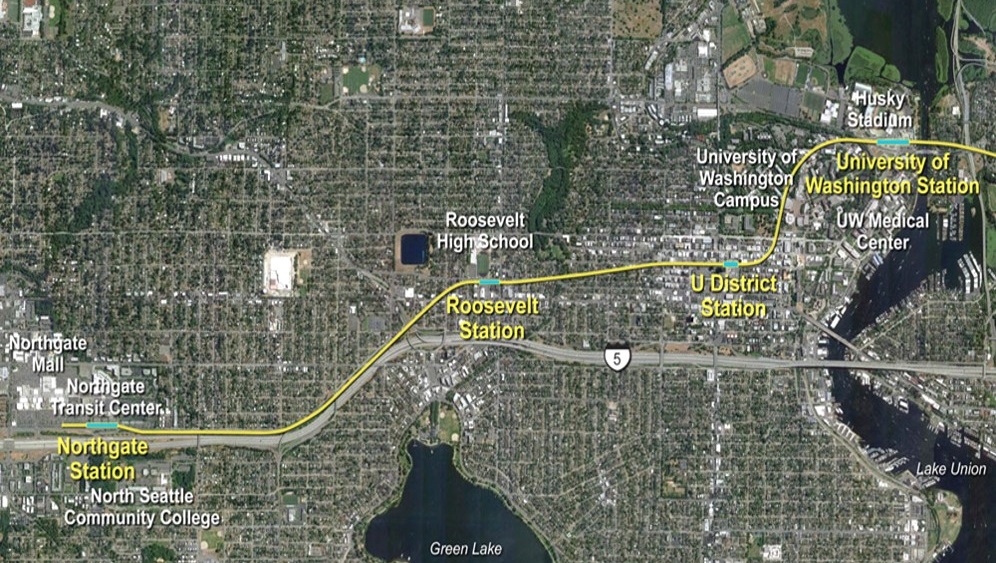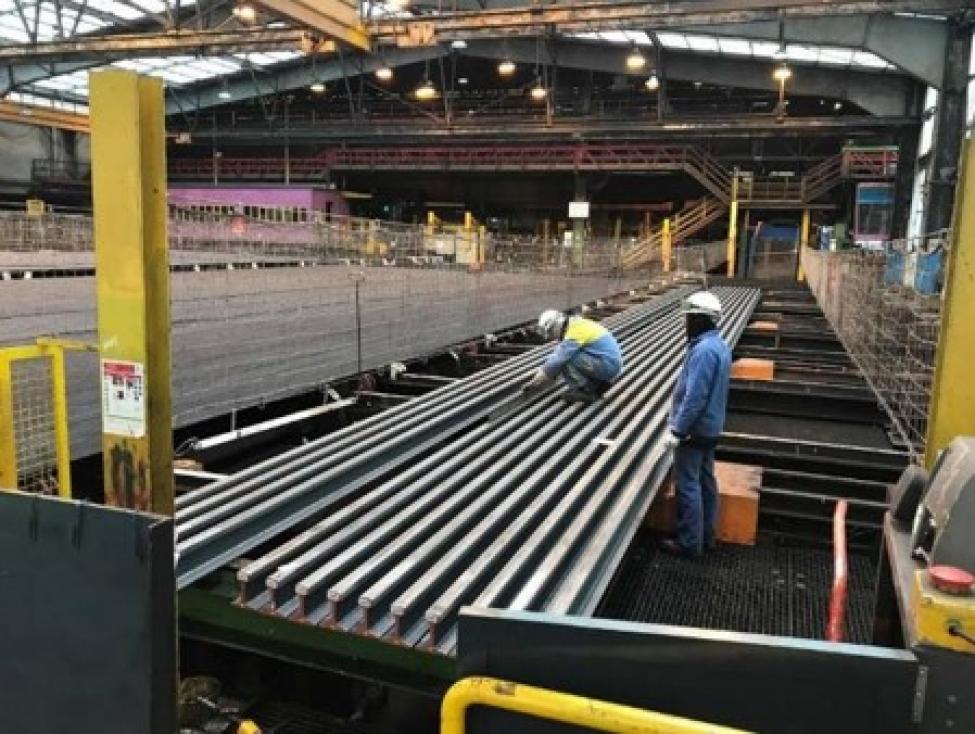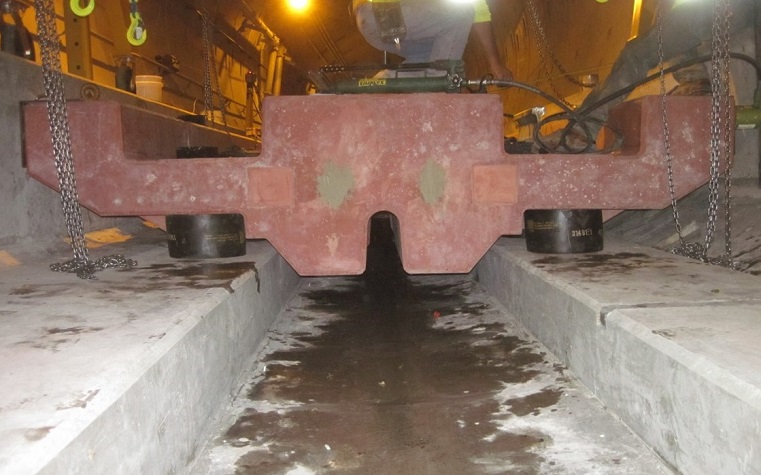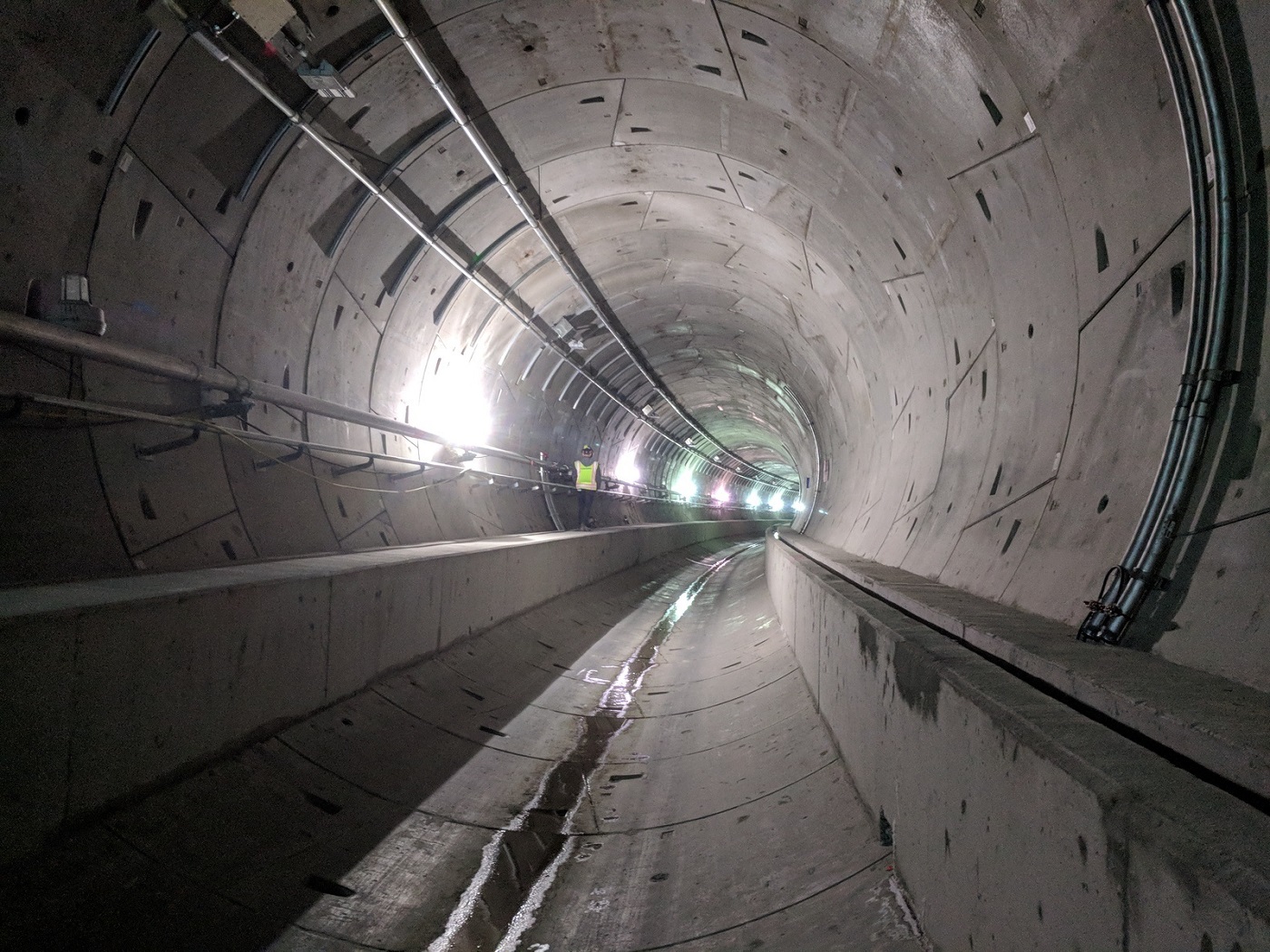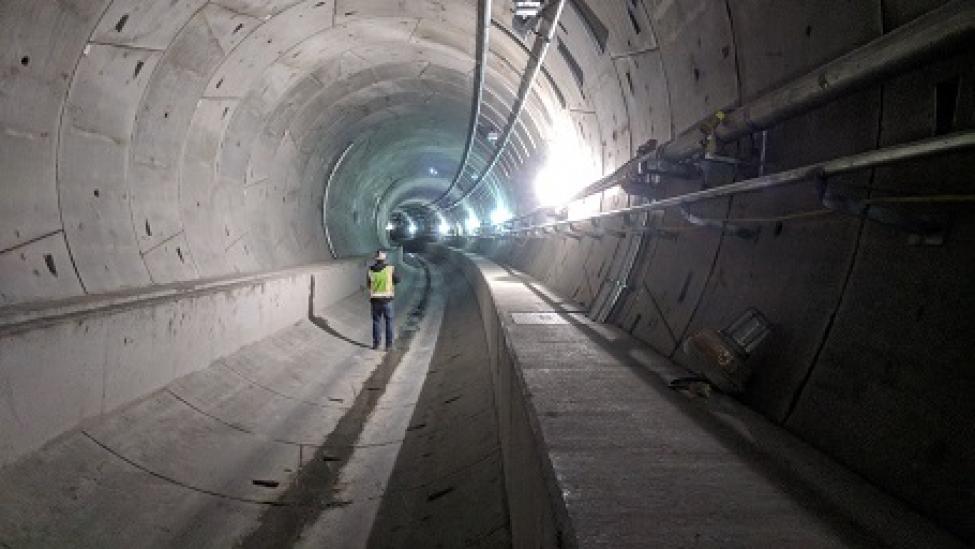
Rails on the way for Northgate tunnels
Last year was a busy one for the 4.3-mile light rail extension from the University of Washington Station to the Northgate neighborhood north of downtown Seattle.
Workers put in almost 1 million hours of labor on the three new stations and inside the tunnels that will sail riders past some of the worst traffic in the region.
Trips from Northgate to Westlake will take 14 minutes, no matter how bad traffic is on I-5.
Aerial view of the Northgate extension.
The extension is on track to open in September, 2021 and is currently about $50 million under budget. Today our Construction Management team updated The Board on what’s ahead in 2018. Here's a few highlights.
Rails ahoy!
Sections of new rail soon headed to the Northgate tunnels.
Forgive the mixed metaphor, but we’re excited about rail installation kicking off this year.
The track contractors are now on site and have begun preparations for rail installation. Fun fact - most of the rails will be installed from the north end of the tunnels where they emerge from underground just south of Northgate Station.
Floating slabs
Some of the most interesting and complex work will be the roughly 7,400 feet of tracks beneath the University of Washington. The rails in this part of the tunnel will rest on a “floating slab."
No, the track bed doesn’t actually float.
But the tracks will sit on a series of extra-dense concrete slabs that each weigh 11,000 pounds.
The concrete mixture used to make the slabs includes a special type of hematite sourced from a site near Duluth, Minn. that was selected for its heavy weight and non-magnetic properties.
More on why that's important in a minute. Each of the 1,618 slabs will sit on custom-built rubber pads sourced in part for their durability and vibration-absorbing properties.
Why go to all the trouble?
We are taking a special approach in this section of tunnel because they run underneath the University of Washington main campus near 26 buildings where research is conducted with extremely precise equipment like electron microscopes.
This equipment, and the billions of dollars in research conducted at UW, are very sensitive to vibrations and electromagnetic interference that can come from operating electric trains 20 hours a day.
The floating slab will absorb the vibrations and other potential interference at the source.
Last summer we flew a drone over the UW campus and traced the path of the new tunnels beneath. (Remember the sun?)
Sound Transit’s world-class floating slab and special trackwork will ensure the research happening at UW will not be impacted by train operations.
And we have real-world experice to back that confidence. We installed a prototype of the floating slab in the tunnels underneath Capitol Hill at a location that has a similar depth and curve angle as our tunnels beneath UW.
Here’s a picture of one of those test sections being installed in the tunnels south of Seattle Community College, basically beneath the old Egyptian Theater.
Note the red hue that comes from the hematite. You can also see the rubber pads that the slabs rests on.
More than half of the slab sections have been cast and will begin arriving on site later this year for installation beneath UW.
We’ll be sure to keep you posted as that work gets underway and these tunnels take the next step toward passenger service in 2021.
